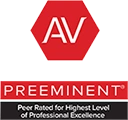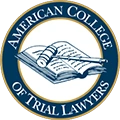Do I have a personal injury case?
You have been involved in a crash and have countless questions. You are not certain where to begin…
You have been involved in a crash and have countless questions. You are not certain where to begin…
Understanding School Zone Speed Limits During Holidays and After School Hours Driving through school zones requires extra caution…
🚗 Were You Involved in a Crash-? Here’s Why You Should Consider Hiring a Personal Injury Attorney! 🚑…
DOES THIS MEAN YOU’RE OUT OF LUCK? What does this mean and why do we have such a…
As personal injury attorneys dedicated to protecting the rights of accident victims, we witness firsthand the devastating consequences…
Who is at fault when one driver is passing another on the left? That depends on the specific…
In Louisiana, hit and run laws address the legal obligations of individuals involved in vehicle crashes. The law…
Following a crash, victims often find themselves dealing with physical pain, emotional distress and smothered by financial burdens.…
REAR-END CRASHES Drivers know that rear-end crashes are among the most common types of crashes. Common Causes:Rear-end crashes…
Fields marked with an * are required
"*" indicates required fields
Great attorney, honest, hard working, you won't find better. Simply excellent.
Very personable service with your needs as their focus. You are not just a number. You are important to them as a person.
I had an awesome experience with Law Firm and I would highly recommend them. Thank You Mr. Richard and your team.

National Association of Distinguished Counsel

The American College of Trial Lawyers

Martindale-Hubbell® (AV Preeminent® Rating)

The American College of Trial Lawyers
© 2025 Law Offices of Richard R Kennedy • All Rights Reserved. Disclaimer | Site Map | Privacy Policy. Digital Marketing By: ![]()